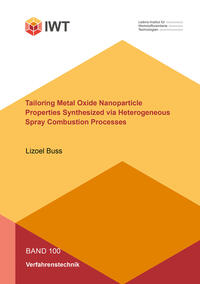
Tailored nanoparticles from many materials can be synthesized via flame spray pyrolysis (FSP), which is a heterogeneous spray combustion process. FSP presents several advantages compared to other techniques, mainly regarding final product purity and operational flexibility. Controllable material properties and the possibility of synthesizing metastable phases are further advantages of the FSP process. While the synthesis of several materials and their applications has been systematically investigated with laboratory-scale reactors, only a few scale-up studies have been performed, and the scale-up of the FSP process is still challenging. To increase the production rate from lab-scale (g/h) to industrial-scale (kg/h), preserving the nanoparticle characteristics, a detailed understanding of the whole synthesis process is crucial. In-depth investigations of fluid dynamics, combustion, and particle dynamics are essential to provide insights into the mechanisms affecting particle properties. In this context, computational fluid dynamics (CFD) is a powerful tool to provide such insights since several aspects of the physical and chemical phenomena occurring at different time and length scales can be acquired. This book presents a consistent combination of CFD techniques and population balance models (PBM) based on a systematic methodology that confidently represents the heterogeneous spray combustion process. The CFD-PBM combination is applied to investigate the evolution and measurements that affect the nanoparticle properties produced via the FSP process. The effects of different operating conditions on the particle residence-time at high-temperature regions and the correlation between the particle properties and high-temperature-particle-residence-time (HTPRT) are presented.